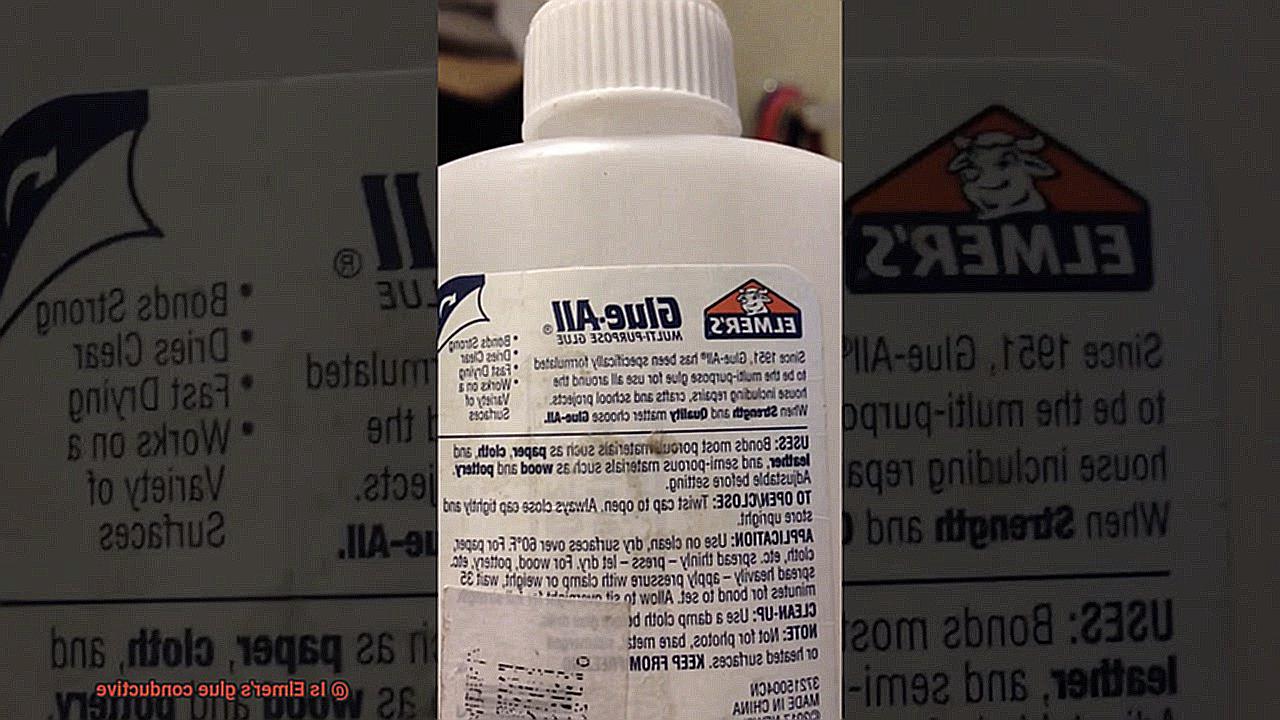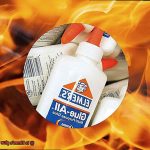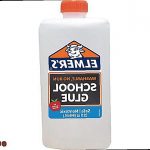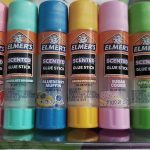Curiosity strikes when you glance at that trusty bottle of Elmer’s glue nestled in your craft drawer.
Could this sticky savior also possess the power to conduct electricity? It sounds like a wild idea, right?
We usually associate glue with sticking things together, not sparking an electric current. But hold on tight, because the world of science loves to throw us unexpected curveballs.
In this blog post, we’re embarking on an exhilarating journey to uncover the truth about Elmer’s glue and its conductivity superpowers. Get ready to dive into the electrifying world of adhesive wonders and unlock a realm of possibilities you never saw coming.
So, buckle up and join us as we unravel the mysteries behind Elmer’s glue and its mind-boggling conductivity potential.
What is Elmer’s Glue?
Contents
- 1 What is Elmer’s Glue?
- 2 What is Conductivity?
- 3 Is Elmer’s Glue Conductive?
- 4 The Composition of Elmer’s Glue
- 5 The Role of Water in Elmer’s Glue
- 6 Metallic or Conductive Additives in Elmer’s Glue
- 7 Experiments to Make Elmer’s Glue Conductive
- 8 Safety Considerations When Modifying Elmer’s Glue
- 9 Conclusion
From school projects to creative endeavors, Elmer’s Glue has been a trusted companion for generations. In this blog post, we will explore the fascinating world of Elmer’s Glue, uncovering its composition, standout features, safety, convenience, and various forms. Get ready to embark on a journey into the realm of adhesive possibilities.
Composition and Standout Features:
Elmer’s Glue is a polyvinyl acetate (PVA) glue, composed of a unique blend of PVA resin, water, and stabilizers. The PVA resin serves as the glue’s primary bonding agent, while water gives it a liquid consistency for easy application. Enhanced with stabilizers, Elmer’s Glue boasts an extended shelf life and resists premature drying.
One of Elmer’s Glue’s remarkable features is its ability to dry clear, creating seamless and nearly invisible bonds. Whether you’re working with paper, cardboard, or fabric, Elmer’s Glue ensures a transparent finish, making it perfect for projects where aesthetics matter.
Another captivating feature is its quick-drying time. Unlike other glues that require hours to set, Elmer’s Glue dries relatively fast, allowing you to complete your projects in record time. Say goodbye to endless waiting and hello to efficient crafting.
Safety and Convenience:
Elmer’s Glue prioritizes safety and convenience. It is non-toxic and safe for use by children. Plus, clean-up is a breeze as Elmer’s Glue can be easily washed off with water. Parents can breathe easy knowing their little ones can unleash their creativity without any harmful effects.
Variety and Forms:
Elmer’s Glue understands that different projects require different types of adhesives. That’s why it offers an array of forms to cater to your needs. Liquid glue is perfect for larger surface areas, while glue sticks provide precise application with minimal mess. And for those seeking a touch of sparkle, glitter glue adds a decorative flair to any project.
Dispelling the Conductivity Myth:
Let’s address a common misconception about Elmer’s Glue. As a PVA glue, it is generally considered non-conductive due to its composition of water and PVA polymer, which inhibit the flow of electric current. While some have attempted to modify it for conductivity by adding conductive materials, caution should be exercised as it may alter the adhesive properties and introduce safety concerns.
What is Conductivity?
Today, we embark on an exciting journey into the realm of conductivity, a fundamental property that shapes the way electricity flows through materials. Get ready to dive into the captivating world of electric current and discover how conductivity plays a vital role in our daily lives.
What is Conductivity?
Conductivity is like a highway system for electrons, determining how smoothly traffic moves on different roads. It measures how well a substance allows the flow of electrical charges through it. Just as some roads are congested with traffic while others flow freely, conductivity tells us how easily electric charges can flow through a material.
The Dance of Electrons
At the heart of conductivity lies the atomic and molecular structure of a material. Metals, with their high electron mobility, are excellent conductors. Their outermost electrons can move freely, creating an electric current that flows like a lively dance. On the other hand, insulators have tightly bound electrons that resist the movement of electric charges, like dancers trapped in place.
The Unit of Measurement
To quantify conductivity, we use siemens per meter (S/m) or mho per meter (℧/m). Different materials exhibit varying conductivity values. Imagine a spectrum from bustling highways to quiet country lanes. Metals like copper and aluminum boast high conductivity levels in the millions of siemens per meter range, resembling bustling highways where electric charges zoom along. In contrast, insulating materials like rubber or plastic have lower values, typically in the range of 10^-12 to 10^-18 S/m, akin to peaceful country lanes with minimal electric charge flow.
Factors Influencing Conductivity

Temperature and impurities can affect conductivity. As temperature rises, conductive materials experience enhanced electron mobility, leading to increased conductivity. It’s like the dance floor heating up, making the dancers more energetic and fluid in their movements. Conversely, impurities or structural defects within a material hinder the flow of electric charges, resulting in decreased conductivity. Think of it as dancers tripping over obstacles on the dance floor, disrupting the flow of the dance.
Practical Applications
Understanding conductivity is crucial in fields such as electrical engineering and electronics. It helps determine whether a material is suitable for use as a conductor or an insulator in various devices. For example, metals with high conductivity are perfect for electrical wiring, ensuring efficient transmission of electricity. Insulating materials with low conductivity are used to prevent unwanted electric current flow and insulate wires from each other, ensuring safety in electrical systems.
Is Elmer’s Glue Conductive?
Join us as we embark on a scientific journey to uncover the truth behind this captivating question.
The Science Behind Conductivity:
Before we dive headfirst into Elmer’s glue specifically, let’s grasp the concept of conductivity. Conductivity refers to a material’s inherent ability to allow the flow of electrical current. It is determined by the movement of electrons within the substance. Generally, insulators, like Elmer’s glue in its original form, impede the flow of electricity due to their tightly bound electrons.
Elmer’s Glue Composition:
Elmer’s glue, renowned for its robust bonding capabilities, primarily consists of polyvinyl acetate (PVA), a polymer. Polymers are typically classified as insulators, suggesting that Elmer’s glue may not possess inherent conductivity. Nonetheless, it is essential to recognize that certain factors can influence a material’s conductivity.
Modifications for Conductivity:
Enter the realm of ingenuity and experimentation. Some crafty individuals have delved into modifying Elmer’s glue to enhance its conductivity. By infusing conductive materials such as graphite or silver particles into the glue, they have birthed a conductive adhesive suitable for electronics projects or circuit repairs. These ingenious modifications create pathways for electron flow within the adhesive, thereby enabling electrical conductivity.
Considerations and Caution:
In our quest for enhanced conductivity, we must tread carefully. While modified versions of Elmer’s glue may offer superior conductivity, it is crucial to consider project requirements and potential trade-offs. Altering the adhesive properties may impact bonding strength or other crucial characteristics. For specific electrical applications or projects where reliable electrical connections are paramount, it is advisable to opt for purpose-made conductive adhesives readily available in the market.
The Composition of Elmer’s Glue
Let’s delve into the ingredients of Elmer’s glue and how they affect its conductivity.
The Composition:
Elmer’s glue is primarily made up of polyvinyl acetate (PVA), a synthetic polymer formed by polymerizing vinyl acetate monomers. PVA creates long chains of repeating units, giving the glue its adhesive properties. Water is also present in the glue as a solvent, making it easy to apply and dry.
Additives:
Elmer’s glue may contain additives such as thickeners, preservatives, and stabilizers. These substances enhance the consistency, shelf life, and performance of the glue. However, they do not significantly impact its conductivity.
Conductivity Explained:
On its own, Elmer’s glue is not conductive. PVA is an insulator that does not facilitate the easy flow of electric current. This is because PVA molecules lack free electrons that can move freely within the material.
Conductive Variations:
Some variations of Elmer’s glue are specifically formulated to be conductive. These variations include additives like carbon black or graphite powder. These conductive materials have a high number of free electrons, allowing electric current to flow through the glue.
Choosing the Right Adhesive:
It is important to note that regular Elmer’s glue without additional conductive additives should not be used for electrical applications. For reliable electrical bonding, it is recommended to use purpose-made conductive adhesives that are specifically designed and labeled as such.
The Role of Water in Elmer’s Glue
Elmer’s glue, the trusty adhesive that has been a staple in crafting and school projects for decades, owes much of its stickiness to a seemingly ordinary ingredient – water. Yes, good old H2O plays a vital role in the adhesive properties of Elmer’s glue, making it the ideal companion for all your sticking needs.
Water is not just an incidental component in Elmer’s glue; it is a significant player, making up around 50% to 60% of the glue’s composition. Its primary function is to create a liquid consistency that is easy to spread and apply onto surfaces. Imagine trying to use a thick, gooey glue – it would be a messy nightmare. Water ensures that Elmer’s glue remains smooth and manageable, allowing for precise application.
But water’s involvement doesn’t stop there. It also acts as a solvent in Elmer’s glue, dissolving other ingredients within the glue to create a homogeneous mixture. So when you squeeze that bottle of Elmer’s glue, you’re actually squeezing out a solution of water and other components that work together to form that strong bond. This dissolution process ensures that the glue spreads evenly across surfaces, enhancing its adhesive properties.
Now comes the magical part. When you apply Elmer’s glue onto a surface, the water begins to evaporate. As it evaporates, it leaves behind a sticky residue that bonds the materials together. This drying process is crucial for the adhesive properties of Elmer’s glue. Factors like temperature, humidity, and the amount of glue applied can impact how long it takes for the glue to dry and harden. So be patient and give your project ample time to dry before moving or handling it.
It’s important to note that while Elmer’s glue may not conduct electricity when wet or after it has dried, water itself is not conductive. And since Elmer’s glue contains a significant amount of water, it does not conduct electricity either. Therefore, if you’re planning on using Elmer’s glue in electrical or electronic applications, make sure it is completely dry before applying any electrical current.
However, fear not. If you find yourself in need of an electrically conductive glue for your ingenious projects, there are specially formulated variations of Elmer’s glue available. These variations contain additives like carbon black or graphite powder that unleash a current-carrying frenzy. So, when it comes to electrical applications, opt for purpose-made conductive adhesives rather than relying on standard Elmer’s glue.
Metallic or Conductive Additives in Elmer’s Glue
Elmer’s glue, a beloved adhesive in the world of arts, crafts, and DIY projects, may not be your first thought when it comes to conducting electricity. However, there is a fascinating realm of specialized Elmer’s glue formulations that contain metallic or conductive additives, giving them the power to carry an electric charge.
Let’s unravel the mystery of these metallic or conductive additives and discover how they work their magic. One common additive found in conductive glues is silver particles. Renowned for its exceptional conductivity, silver effortlessly carries electrical current. When these minuscule silver particles are introduced into the glue, they create a network that forms a conductive path within the adhesive, enabling it to conduct electricity with ease.
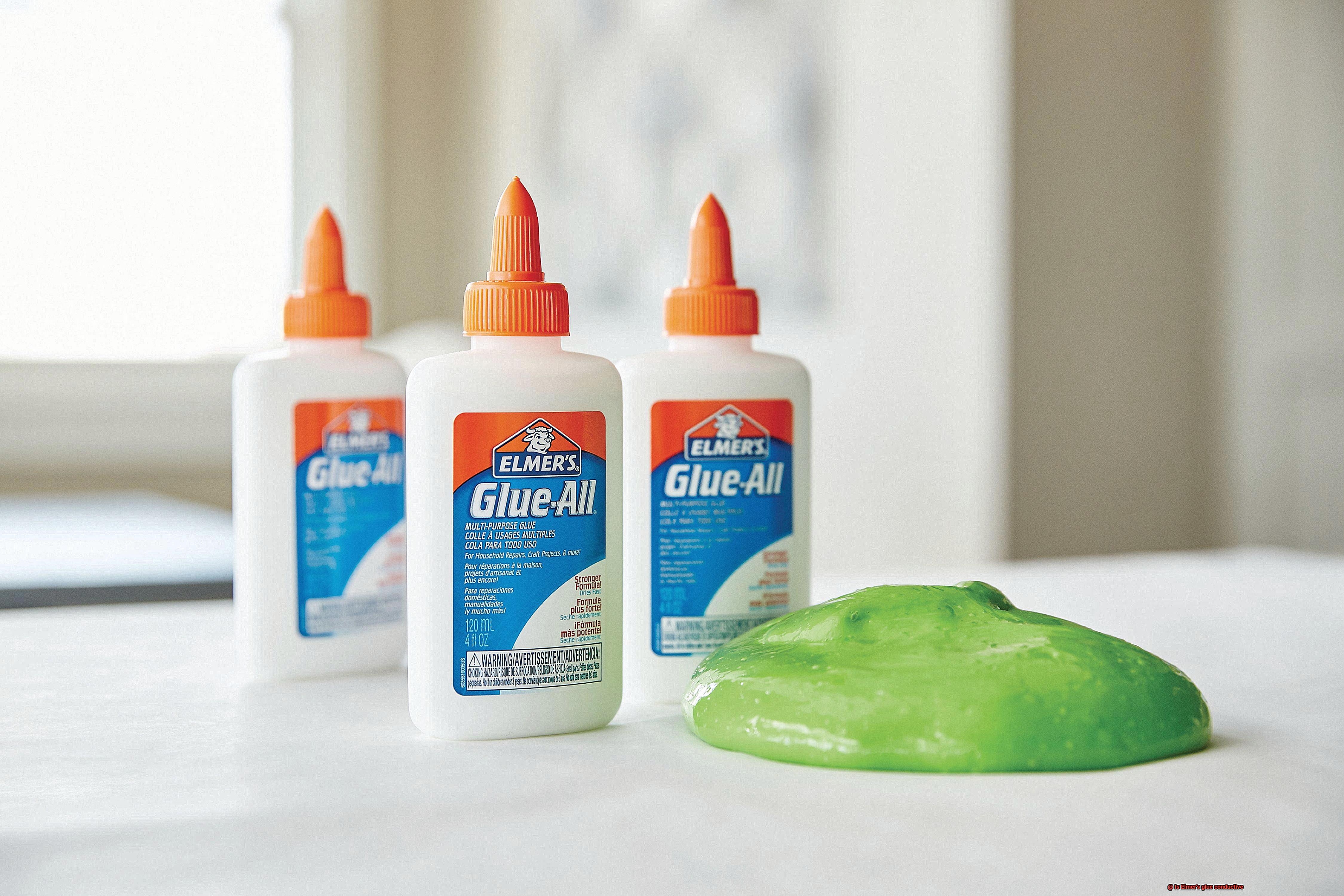
But silver is not the sole star of the show. Other additives such as carbon black, copper particles, and even graphene have emerged as key players in certain conductive glues. These additives operate in a similar fashion by constructing pathways for electrical current to flow through the glue, expanding the possibilities of conductive applications.
Before you race to your nearest craft store in search of conductive Elmer’s glue, it’s important to note that not all Elmer’s glues possess these magical properties. The standard white glue cherished for its bonding abilities is not conductive. However, if you’re seeking a glue that can bond components, repair circuits, or forge electrical connections, peruse the label or product description diligently to uncover the right conductive variation.
When handling any form of conductive glue, it is crucial to adhere to the manufacturer’s instructions and prioritize safety precautions. This may entail ensuring proper ventilation, donning protective gloves, and avoiding contact with your eyes or skin.
Experiments to Make Elmer’s Glue Conductive
Prepare to be amazed as we delve into the electrifying world of conductive glue and unlock its hidden potential through a series of exciting experiments.
Let’s start with a simple yet mind-blowing experiment. Grab a battery, a light bulb, and two metal wires. Cut two small pieces of wire, around 2 inches long, and strip the insulation off both ends. Take one wire and wrap one end around the positive terminal of the battery. Then, wrap the other end around the metal part of the light bulb. Now, take the second wire and wrap one end around the negative terminal of the battery.
Dip the other end into a small amount of Elmer’s glue. Gently touch the wire with glue to the metal part of the light bulb. And voila. If the glue is conductive, like magic, the light bulb will illuminate, showcasing Elmer’s glue’s hidden power.
Let’s take our experiment a step further with a simple conductivity tester using Elmer’s glue. Cut two strips of cardboard or plastic, about 1 inch wide and 4 inches long. Apply a thin layer of Elmer’s glue onto one side of each strip, covering about half of the surface. Allow it to dry completely. Once dry, attach an alligator clip to one end of each strip, ensuring they are securely fastened.
Now, connect one strip to the positive terminal of a battery and the other strip to the negative terminal. When you touch the two strips together, you complete the circuit. And if Elmer’s glue is conductive, brace yourself for an LED or buzzer connected in parallel with the battery to light up or make a sound.
Safety Considerations When Modifying Elmer’s Glue

As we embark on this thrilling journey, it is imperative to prioritize safety. Modifying Elmer’s glue offers endless possibilities, but it is crucial to understand the potential hazards and take necessary precautions. Let’s delve into the safety considerations when venturing into the realm of glue modification.
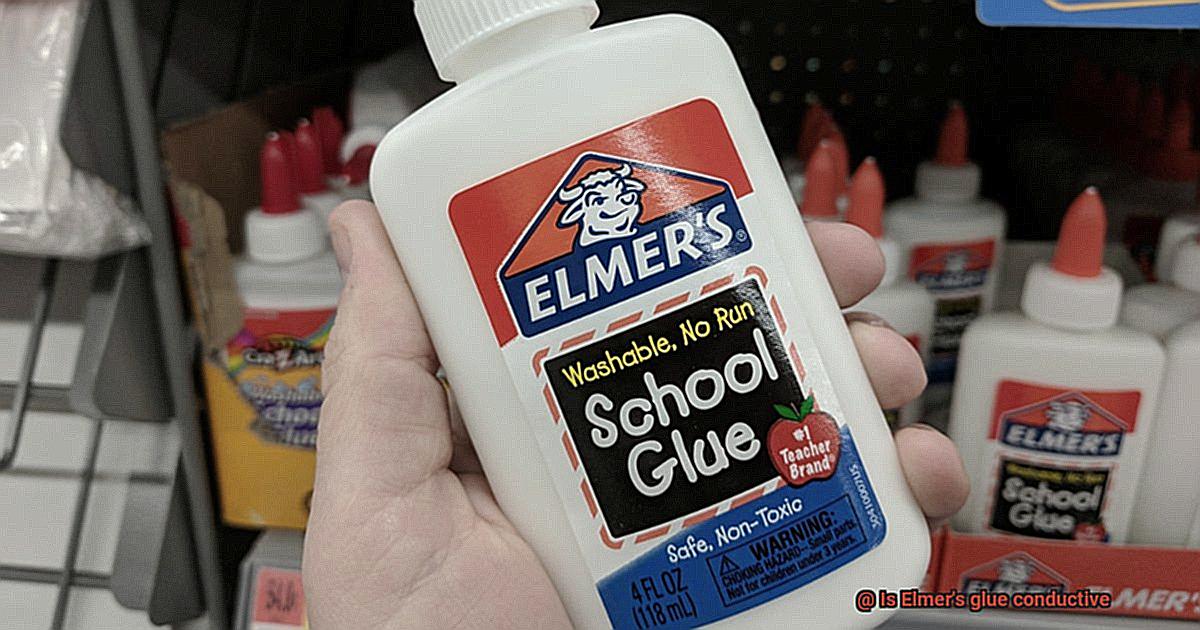
Read and Understand the Label:
Before embarking on any glue modification project, take a moment to carefully read and understand the label instructions. The label contains vital information about proper usage, potential hazards, and safety precautions. Following these instructions ensures safe and appropriate use of the glue.
Embrace the Power of Ventilation:
When working with modified glue or any chemical substances, prioritize proper ventilation in your workspace. Adequate ventilation prevents the accumulation of harmful fumes or vapors that may be inhaled. Work in a well-ventilated area or utilize a fume hood to minimize health risks.
Gear Up for Safety:
Depending on the nature of your modifications, wearing personal protective equipment (PPE) is paramount. Don gloves, safety goggles, and a lab coat or apron to shield against skin contact, eye irritation, or spills. PPE reduces accidents and exposure to potentially hazardous materials.
Stick to Known Materials:
Stick to using known and safe materials when modifying Elmer’s glue. Mixing unknown substances can lead to unpredictable reactions and hazardous situations. Thoroughly research the compatibility and potential risks associated with any materials you plan to add to the glue.
Test Small Before Going Big:
Before committing to a large-scale modification project, conduct small-scale tests. Testing a small amount of modified glue allows you to observe unexpected reactions or changes in properties without risking a significant amount of material. Make necessary adjustments before moving forward with larger quantities.
Storage and Disposal:
Proper storage and disposal of modified glue are crucial for maintaining safety. Store modified glue in a secure container, away from children and pets, to prevent accidental ingestion or exposure. Dispose of any leftover or unused modified glue according to local regulations and guidelines for chemical waste.
Seek Expert Guidance:
If you’re unsure about the safety considerations involved in modifying Elmer’s glue or if you’re planning more complex modifications, seek professional advice. Consulting experts in chemistry or materials science can provide invaluable insights and guidance on the safe handling and modification of glue.
Conclusion
In conclusion, Elmer’s glue is not conductive.
Despite its adhesive properties, this popular crafting glue does not possess the ability to conduct electricity. So, if you’re looking for a reliable electrical conductor, Elmer’s glue is not the right choice.
However, don’t let that discourage you from using it in your creative projects. Its non-conductive nature makes it perfect for a wide range of arts and crafts applications where electrical conductivity is not needed.
Whether you’re working on paper crafts or DIY projects, Elmer’s glue remains a versatile and dependable adhesive option.

